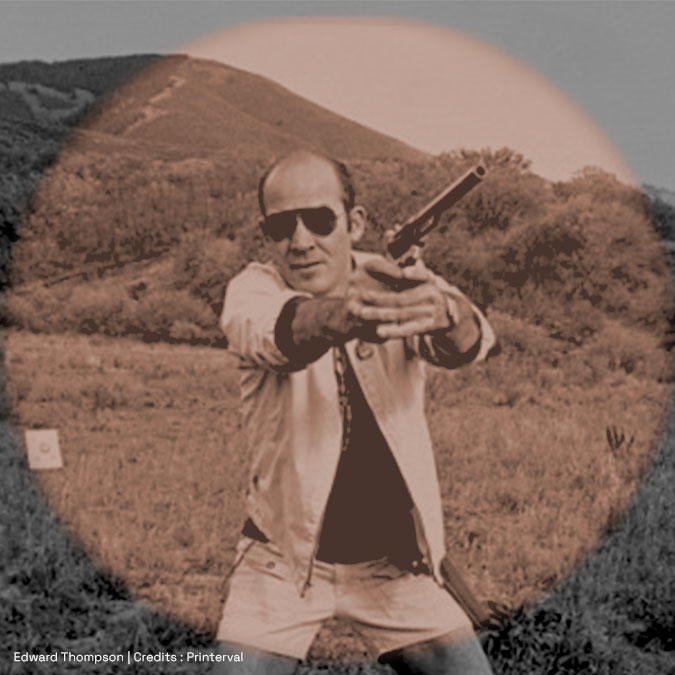Decision-making in fiction: How the best writers achieve consistency
Toolbox articles are shorter-form pieces that explore the writing craft, like point-of-view narrative and tension. Sign up to our newsletter to receive these articles direct to your inbox, before they’re published on the site.
I’ve recently been interested in understanding the decision-making process that goes into writing a story. The scope. The framing. How a writer decides what to include in their story. And just as importantly, how they decide what not to include.
I started thinking on the subject after reading Annie Ernaux’s excellent novel A Man’s Place – a piece of autobiographical fiction that explores the narrator’s relationship with her father, his life and how it conflicts with her academic pursuits, and how she comes to terms with his death.
As you can imagine, the book is vast in scope. It details a man’s life, his relationship with his daughter and wife, his death. And it feels vast, too. It doesn’t feel lite. It doesn’t feel like corners have been cut. Rather, it feels that no stone has been left unturned. It feels masterfully complete.
And yet, the book is fewer than one-hundred pages in length (depending on your edition). I came away wondering what sort of trick Ernaux had managed to pull off. How does she so accurately portray a man’s entire life while at the same skipping decades with nothing more than a section break?
And then I thought of another book from the literary canon.
Ulysses. James Joyce’s magnum opus takes place over just a twenty-four hour period. Nothing particularly extraordinary happens in this time, and yet the tome is one-thousand pages in length. Over ten times as long as Ernaux’s A Man’s Place, but it covers a tiny fraction of the timeframe. Both stories feel equally rich, but one of them is sparse on details while the over is overflowing with them; one of the books gallops between years, while the other zooms in on moment upon moment in time.
When we think about craft in fiction, how do we begin to balance these two seemingly disparate and contradictory styles?
To my mind, there are two ways of thinking about decision-making and scope in fiction. Macro and micro. i.e. what a writer chooses to include and exclude structurally while moving the plot along through time, versus the specific information they choose to share with a reader during a particular scene.
Let’s start small and consider the latter: Micro.
Every scene in every story is filled with a near-infinite number of possible details. How does the setting look? What does it smell like? Where are the characters placed? How do they feel? The list goes on and on. But, of course, no story could cover all these different possibilities. It would be extremely dull and would take away from the most important aspects of fiction, such as character and plot.
So we return to the main question concerning this article. What to include, and what to leave out?
Let’s take a look at an extract from A Man’s Place:
My mother appeared at the top of the stairs. She dabbed her eyes with the tablecloth she’d taken upstairs to the bedroom with her after lunch. She said in a neutral voice: ‘It’s over.’ I don’t remember the minutes that followed. I can only recall my father’s eyes fixed on something far behind me, and his lips curled up over his gums. I believe I asked my mother to close his eyes. Around the bed, there was also my mother’s sister and her husband. They offered to help with the washing and shaving, because we’d need to hurry before the body stiffened up. My mother thought that we could dress him in the suit he’d worn to my wedding three years previously. The whole scene went by very simply, without crying or sobbing, just my mother with red eyes and an unmoving smile.
Consider the weight of this scene. The narrator’s father has just died, and along with her mother, aunt and uncle, she stands by and looks over his body for the last time. There is so much that could be described here (not least of all because it’s written in first-person), and yet the result is so bare. So stripped back. Everything is neutral and cold. The only hint of emotion we have is the mother dabbing at tears around her red eyes.
On the other side of the spectrum, let’s take a look at this excerpt from Ulysses, where one of the two main characters, Leopold Bloom, enters the horse-drawn carriage to take him to a funeral.
Mr Bloom entered and sat in the vacant place. He pulled the door to after him and slammed it twice till it shut tight. He passed an arm through the armstrap and looked seriously from the open carriage window at the lowered blinds of the avenue. One dragged aside: an old woman peeping. Nose whiteflattened against the pane. Thanking her stars she was passed over. Extraordinary the interest they take in a corpse. Glad to see us go we give them such trouble coming. Job seems to suit them. Huggermugger in corners. Slop about in slipper-slappers for fear he’d wake. Then getting it ready. Laying it out. Molly and Mrs Fleming making the bed. Pull it more to your side. Our windingsheet. Never know who will touch you dead. Wash and shampoo. I believe they clip the nails and the hair. Keep a bit in an envelope. Grows all the same after. Unclean job.
In complete contrast to the previous example, this paragraph is overflowing with details, from the mechanics of Bloom entering the carriage and fastening himself to the armstrap to the description and inner-machinations of onlookers.
The two excerpts could hardly be more different. But then again, the two novels could hardly be more different, either. One is about a daughter coming to terms with the life and death of her father, the other dives into the human psyche through stream-of-consciousness; one is about capturing the place that exists between a man and his daughter, the other is about capturing the thriving day-to-day activity of city life.
As such, Ernaux’s writing is sparse and skeletal. Much like her relationship with her father, there’s as much conveyed in what’s not said and written as what is. If we think of it in these terms, it makes sense that Ernaux chooses to describe to the reader as little as possible. It’s literary economy at its most frugal.
Joyce’s writing, on the other hand, sometimes feels like it’s exploding off the page with colours and emotions and smells and tastes. This is a book that’s trying to simultaneously capture the internal and the external. Verbosity is a must. For Joyce, it’s not a question of what to describe, it’s a question of how many descriptions he can fit into the prose.
So what about the macro? The structure of a book. Its pacing. How the characters develop. How the plot unfolds. The big beating-heart questions of a story.
Unsurprisingly, these also follow the general texture of the stories. In A Man’s Place, after her father’s death, the narrator recounts the preparations for the funeral, the admin, the abundance of flowers, the burial, the aftermath. And then, the story leaps back in time eighty years or so. To just before the beginning of the twentieth century. From here, it’s her father’s biography told, of course, through the eyes of his daughter. The story jumps forward in years at a time, in a fragmented way, as if the bits in-between have been lost to time along with the father.
Back to Ulysses, and after Bloom enters the carriage, Joyce recounts the journey to the funeral, the conversations about old acquaintances and the weather, rabbit holes of endless, loosely associated thoughts that are the backdrop to a slow march through the city centre. The journey itself couldn’t last more than twenty minutes, and yet it’s twenty pages of dense, descriptive text. This is just a fragment from the novel as a whole, but it’s indicative of a meandering, tangential quality that pervades it. Rather than space between events, there is description.
In both books, the structural layout complements the story and style. If A Man’s Place is about empty places between moments in time, Ulysses is all about filling those moments with words.
Where does this micro and macro analysis leave us with regards to our original questions about a writer’s decision-making? What can we learn from Ernaux’s and Joyce’s apparently opposing styles?
I believe the answer lies in consistency in tone. Tying together every element of a story, from voice to character development to setting, so that it sings in harmony with the plot and its themes. We’ve seen briefly how this works with A Man’s Place and Ulysses. They’re so well put together that they both roll along seamlessly, and not a single word seems out of step.
Of course, achieving this consistency, taking the idea from theory to practice, is another question entirely. As Matt Kendrick wrote in his excellent guest post, much of a writer’s skill is a learned innateness. A sort of sixth sense that’s been built up over time through thousands of hours or practice, study, and reading.
This isn’t a skill that we can simply boil down with analysis. Indeed, it may be one of the most challenging and rare qualities that a writer can develop. And equally it may well be one of the most defining characteristics of great fiction. When a piece displays inconsistency, it’s so noticeable. It sticks out like a sore thumb. It rings like a bum note. When it’s done really well, it’s smooth and barely noticeable. But that effortlessness is so often the sign of the best writing.
Try it at home
Pick one of your favourite books off the shelf and quickly leaf through the pages. Read the occasional paragraph here and there. Ask yourself about tone of voice, style, texture, pacing. Do these feel consistent throughout the book? If so, how? What’s resonating from one page to the next? Is it laconic and stripped back like A Man’s Place? Or is it verbose like Ulysses? What other qualities can you pick up on that run through the book?
Go a step further
James Baldwin’s ‘Sonny’s Blues’ is a great example of an entire story and all its components pulling in the same direction. From the gritty, inner-city Harlem setting to the tension in the brothers’ relationship to the euphoric ending that seems to be building like a smooth crescendo from the first page, this piece hangs together flawlessly. Click here to read the story as well as our analysis.



